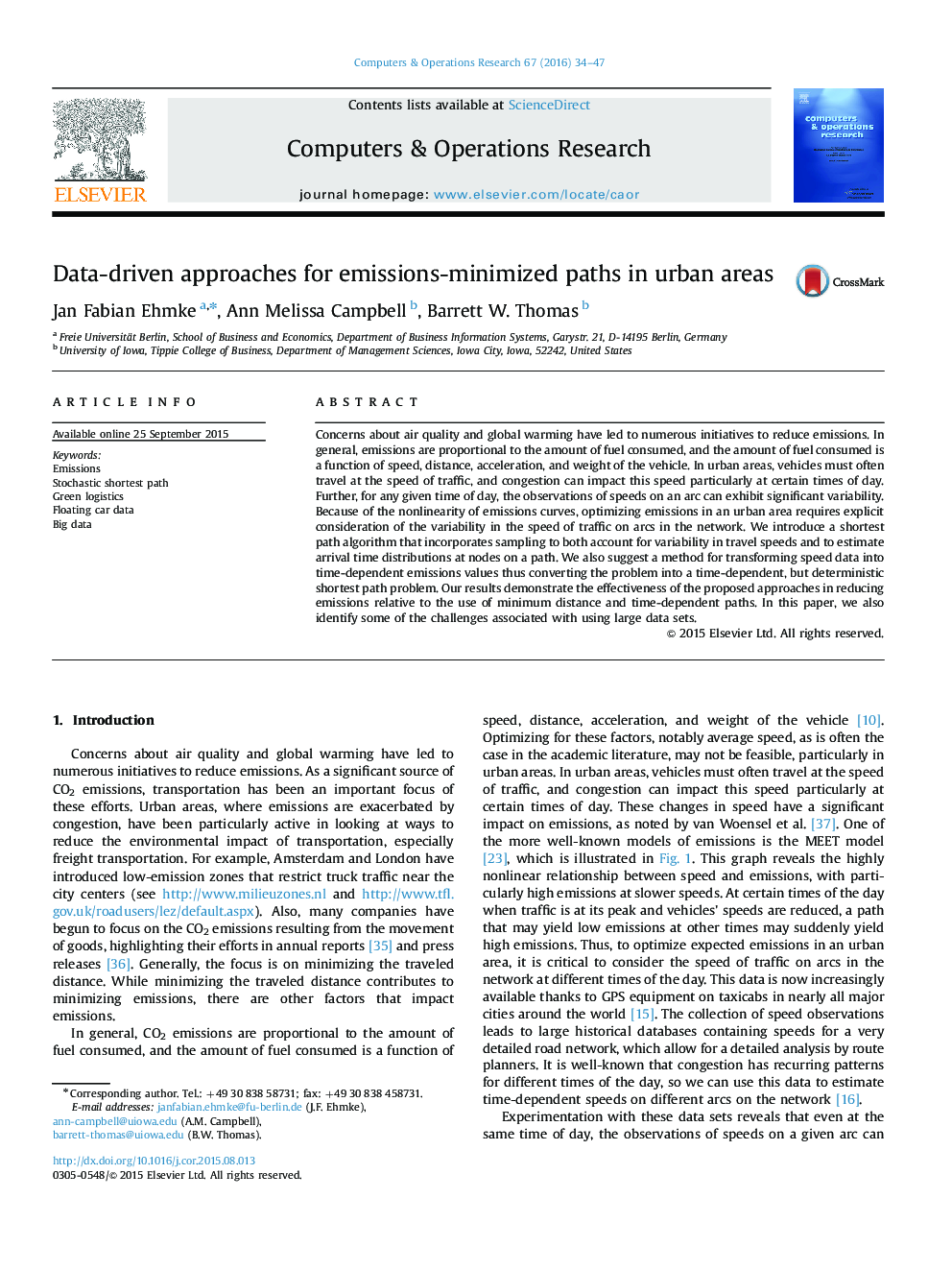| Article ID | Journal | Published Year | Pages | File Type |
|---|---|---|---|---|
| 475629 | Computers & Operations Research | 2016 | 14 Pages |
•We present a new way of constructing expected emissions-minimized paths in urban areas.•We discuss the usage of sampling to determine expected emissions-minimized paths.•We compare the sampling-based method to a deterministic path generation method.•We discuss how to overcome technical challenges of using large data sets in shortest path construction.•We analyze the performance and the quality of the proposed methods based on 230 million real speed observations.
Concerns about air quality and global warming have led to numerous initiatives to reduce emissions. In general, emissions are proportional to the amount of fuel consumed, and the amount of fuel consumed is a function of speed, distance, acceleration, and weight of the vehicle. In urban areas, vehicles must often travel at the speed of traffic, and congestion can impact this speed particularly at certain times of day. Further, for any given time of day, the observations of speeds on an arc can exhibit significant variability. Because of the nonlinearity of emissions curves, optimizing emissions in an urban area requires explicit consideration of the variability in the speed of traffic on arcs in the network. We introduce a shortest path algorithm that incorporates sampling to both account for variability in travel speeds and to estimate arrival time distributions at nodes on a path. We also suggest a method for transforming speed data into time-dependent emissions values thus converting the problem into a time-dependent, but deterministic shortest path problem. Our results demonstrate the effectiveness of the proposed approaches in reducing emissions relative to the use of minimum distance and time-dependent paths. In this paper, we also identify some of the challenges associated with using large data sets.
